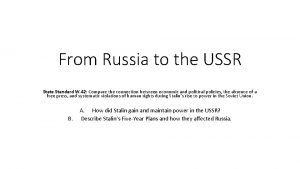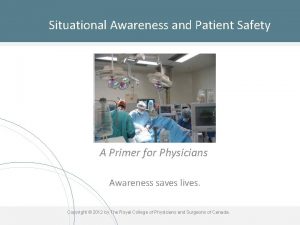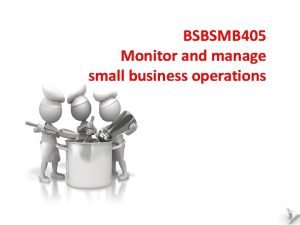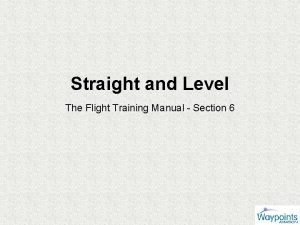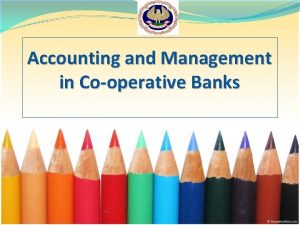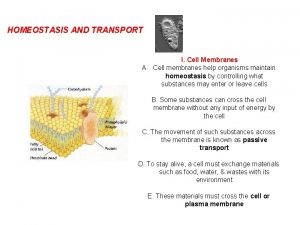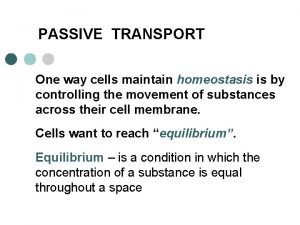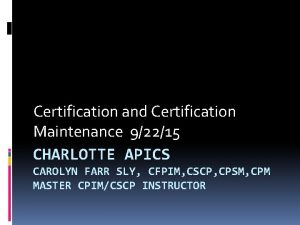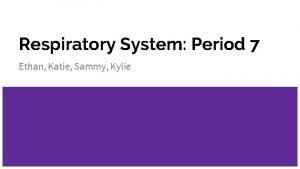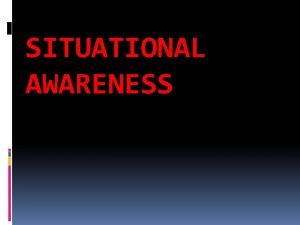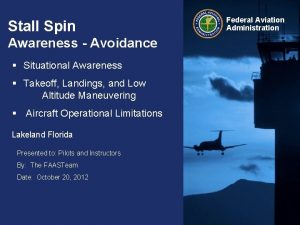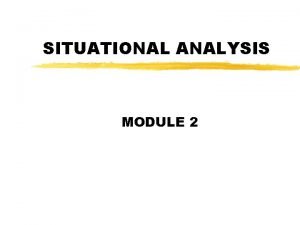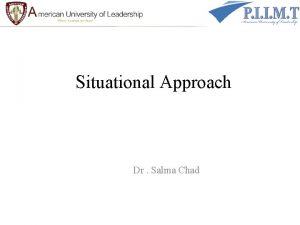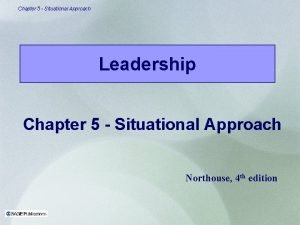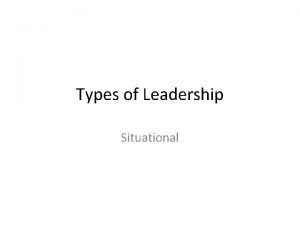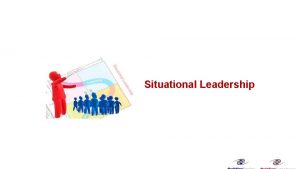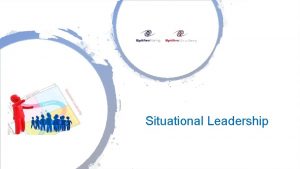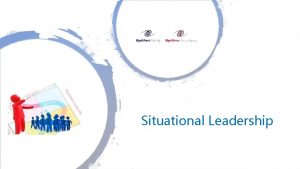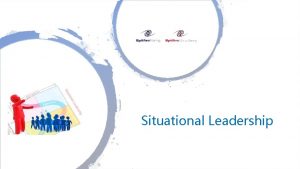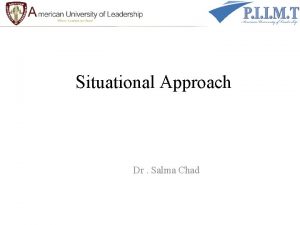Situational Awareness How to gain and maintain it































- Slides: 31

Situational Awareness How to gain and maintain it

Gaining and Maintaining Situational Awareness 1. What is Situational Awareness ? 2. Gaining Situational Awareness • Gathering data • Understanding • Thinking ahead 3. Maintaining your Situational Awareness 4. Improving your Situational Awareness Gaining and Maintaining Situational Awareness Page 2 1. HP_02_Vis_SA

Why Situational Awareness ? The most frequent causal factor of all accidents (41 percent) was lack of positional awareness in the air. UK CAA Global Fatal Accident Review 1980 -1996 The second most common primary causal factor was “lack of positional awareness in the air, ” generally resulting in controlled flight into terrain (CFIT). Flight Safety Digest November 1998–February 1999. Special FSF Report: Killers in Aviation: Good airmanship requires pilots to have good situational awareness; it is the basis for decision making and action. Gaining and Maintaining Situational Awareness Page 3 1. HP_02_Vis_SA

Gaining and Maintaining Situational Awareness 1. What is Situational Awareness ? 2. Gaining Situational Awareness • Gathering data • Understanding • Thinking ahead 3. Maintaining your Situational Awareness 4. Improving your Situational Awareness Gaining and Maintaining Situational Awareness Page 4 1. HP_02_Vis_SA

What is Situational Awareness ? q The perception of elements in the environment, within a volume of time and space, q The comprehension of their meaning and q The projection of their status in the near future What happened ? Where am I ? What is happening ? What could happen ? Gaining and Maintaining Situational Awareness Page 5 1. HP_02_Vis_SA

Elements of Situational Awareness Informational Influences Environmental Awareness Environmental Influences System Awareness Mode Awareness Crew Actions & Behaviours Spatial Orientation Personal Organizational Influences Time Horizon Source : Aircrew Incident Reporting Scheme (AIRS) Model Gaining and Maintaining Situational Awareness Page 6 1. HP_02_Vis_SA

Three Levels of Situational Awareness 1 We have to see and sense : PERCEIVE 2 We need to understand what was actually seen: COMPREHEND 3 We have to use what we have understood to think ahead : PROJECT 3 Thinking ahead Updating the model Understanding the situation triggers decision making, action and review 2 Understanding Comparison with 1 mental models Scanning Gathering data Gaining and Maintaining Situational Awareness Feedback, check, monitor Page 7 1. HP_02_Vis_SA

Assessment of your Situational Awareness q Seek and gather data (sensing) q Combine data into meaningful information (perception) q Understand what the information means (comprehension) q Use your understanding to think ahead and reconsider the plan (projection) Where do we want to go? Where have we been? How Can We Improve Our Situational Awareness ? Where Are We Now Situational awareness describes the pilot’s knowledge of what is going on around him — where he is, his orientation, what mode the aircraft is in and what other people are doing

Gaining and Maintaining Situational Awareness 1. What is Situational Awareness ? 2. Gaining Situational Awareness • Gathering data • Understanding • Thinking ahead 3. Maintaining your Situational Awareness 4. Improving your Situational Awareness Gaining and Maintaining Situational Awareness Page 9 1. HP_02_Vis_SA

Gathering data : What to look for and when Build the mental model by : - scanning the important aspects of our surroundings - comparing them with experiences and knowledge in memory Plane – Control Path – Navigation People – Self and Others Manage – System and Situational Awareness Now Future AN PA ICI Plane SC Path People E AT U L VA E TE T AN ER ID NS CO Evaluate all aspects … Gaining and Maintaining Situational Awareness Page 10 Plane, Path, People 1. HP_02_Vis_SA

Gathering data : Learning what to ‘see’ What to search for – driven by the need for the information When to look at specific information, phase of flight or event timing Where the information can be found, source and reliability Why the information is relevant to the circumstances l Know what’s important and why Having more data doesn’t mean more information l Manage the task of scanning l Balance scan time with quality of information l Use procedure-based scans l Avoid interruptions s… p i l Don’t rush e. T l m So Gaining and Maintaining Situational Awareness Page 11 1. HP_02_Vis_SA

Gathering data : Failing to ‘see’ q Actively seek new data, use alternative sources where data are not available or difficult to detect q Scanning and observing require discipline q Be aware of visual illusions (senses to pick-up g’s - !!? ? ) q Do not ‘expect’ to see something Sometimes you see only half of the picture but need all of it to understand the situation Gaining and Maintaining Situational Awareness Page 12 1. HP_02_Vis_SA

Understanding - Creating the mental model Mental models are formed by : q The combination of knowledge and experience recalled from memory, and q The perceived information from the real world Memory Recall Training Knowledge Experiences Gaining and Maintaining Situational Awareness Page 13 1. HP_02_Vis_SA

Understanding - Creating the mental model Mental models are formed by : q The combination of knowledge and experience recalled from memory and q The perceived information from the real world Real World Searching Plane, Path, People What, When, Where, Why Gaining and Maintaining Situational Awareness Page 14 1. HP_02_Vis_SA

Understanding – Comparison and Analysis q Compare and update our mental models with the real world q When matching, understanding of the situation is achieved Internal attention External attention Memory Mental Recall Real World Model Searching Training Plane, Path, People Knowledge Experiences What, When, Where, Why Understanding of the situation Gaining and Maintaining Situational Awareness Page 15 1. HP_02_Vis_SA

When Understanding : Organize! Control your thinking! Understanding improves with experience : more memory situations (patterns and associations) developed for comparisons q Check all aspects of the mental model q How does the situation compare with “the plan” q How does the situation compare with previous situations WATCH IT ! Most frequent Situational Awareness errors (1/3) occur in situations where the information existed but was left unattended, usually because of distraction Gaining and Maintaining Situational Awareness Page 16 1. HP_02_Vis_SA

When NOT Understanding : Watch Out ! q Information may be misinterpreted : Poor mental model q Failure to recognize the mental model needs to change q Control thinking process Question yourself, monitor yourself, be aware of your own situation Do Not Assume. CHECK ! Gaining and Maintaining Situational Awareness Page 17 1. HP_02_Vis_SA

Thinking Ahead – Projection An accurate understanding of the situation is essential for planning ahead q Stay ahead of the airplane : Anticipating is projecting the current situation into the future Standard procedures allow you to anticipate what other crew members will do in a given situation q Planning : All crew members build their situation awareness on common planning Thinking ahead prepares for decision making Gaining and Maintaining Situational Awareness Page 18 1. HP_02_Vis_SA

Situational Awareness & Decision Making Think Ahead Understand Perceive nal Anticipated o i t ss ua Result Sit rene a Aw Planned Action Goal Action Result Feedback Decision Making Loop Gaining and Maintaining Situational Awareness Page 19 1. HP_02_Vis_SA

Thinking Ahead – in practice q Set time or place markers for rechecking the situation q Confirm that the future situation agrees with the plan q Set priorities regarding the current situation Rules Standard Procedures q Set priorities for thinking 1000 ft: Speed < Vref + 20 Workload Check height, flight path, configuration Attention Task Next: 500 ft, wind / tailwind check 500 ft: Speed < Vref + 20 Check height, flight path Next: Threshold, < Vref +15 Threshold: < Vref + 15, height 50 ft Next: touchdown speed and position Gaining and Maintaining Situational Awareness Page 20 1. HP_02_Vis_SA

Failing to Think Ahead – “What If ? ” q Consider contingencies q Manage awareness of other crewmembers Recognize typical threat scenarios: l l l Rushed briefings and checklists Rapidly changing weather Last leg of the day Runway change Unstable approach Gaining and Maintaining Situational Awareness Page 21 1. HP_02_Vis_SA

Gaining and Maintaining Situational Awareness 1. What is Situational Awareness ? 2. Gaining Situational Awareness • Gathering data • Understanding • Thinking ahead 3. Maintaining your Situational Awareness 4. Improving your Situational Awareness Gaining and Maintaining Situational Awareness Page 22 1. HP_02_Vis_SA

Maintaining Situational Awareness Monitor, Focus and Direct your Attention Scan: Plane, Path, People = 3 Ps Anticipate, Stay Ahead of the Airplane Consider ‘what if’ Focus on the right information at the right time Keeping the priorities straight is a constant challenge What don't we know that we need to know What do they know that I need to know What do I know that they need to know What are we not paying attention to Gaining and Maintaining Situational Awareness Page 23 1. HP_02_Vis_SA

Clues to the loss of awareness Losses in Situational Awareness may occur during q Periods of high workload q Periods of multi-tasking q q Preoccupation with other tasks Inadequate feedback from crewmembers Periods of stress Interactions with automated systems DO Fly the aircraft: Take over Change automation level Go back to the last stable situation Check navigation, speed, height Plane, Path, People Ask questions: of your self of others of the situation Gaining and Maintaining Situational Awareness Page 24 1. HP_02_Vis_SA

Recovering Situational Awareness The Golden Rules: FLY NAVIGATE COMMUNICATE MANAGE CRUISE FUEL F. USED TOTAL 45 400 42 200 2030 138 200 KGx 1000 45 300 FF KG/H 2030 AIR LDG ELEV OVHT TAT SAT 51 36 ISA S F M S G -/- MAX SPD VLE =200 KTS 3 21 TO 24 21 TO 23 P °C PSI FT/MIN 50 GWCG 23 H 56 10. 5 CAB V/S CAB ALT 22 °C +5 FT AUTO 510 22 GW FOB FT 3500 37. 5 % 370 000 KG 30 000 KG Active CTL: OAKLAND KZAK RECALL REQUEST EMERG q Go to the nearest safe, simple and stable situation; follow procedures q Assess the current situation with different data q Go back to the last thing you were sure of q Avoid fixation on a past problem q Take time to think Gaining and Maintaining Situational Awareness Page 25 1. HP_02_Vis_SA

Recovering Situational Awareness Mental resources Pay attention to mode transitions Monitor and learn from them to control Situational Awareness Mental effort to stay in control of the aircraft Gaining and Maintaining Situational Awareness Mental resources to control actions Page 26 1. HP_02_Vis_SA

Gaining and Maintaining Situational Awareness 1. What is Situational Awareness ? 2. Gaining Situational Awareness • Gathering data • Understanding • Thinking ahead 3. Maintaining your Situational Awareness 4. Improving your Situational Awareness Gaining and Maintaining Situational Awareness Page 27 1. HP_02_Vis_SA

Improving your Situational Awareness Control your thinking Preparation Anticipation Gathering and Checking Knowledge Behavior Prepare and review Notice and perceive Understand interpret Project and think ahead Communicate Manage stress and workload Know your boundaries – how close to the edge of safety do you operate ? Gaining and Maintaining Situational Awareness Page 28 1. HP_02_Vis_SA

Improving your Situational Awareness Plan Preflight planning is more than fuel and flight path. Visualize actions, consider all threats, know tasks required for each flight phase, distribute your workload evenly Scan Actively seek information from available reliable sources Clarify anything that seems ambiguous Pay Attention Develop a systematic scanning pattern shifting your attention from the aircraft, to the flight path, to the people around you, then back to the aircraft Anticipate Take time to consider the possibility of something going wrong Constantly ask yourself “what if, ” and develop contingency plans Remind Manage interruptions and distractions Set yourself reminders for tasks that may become either forgotten or interrupted Communicate Has your awareness become vague? Communicate, refresh and confirm the information you’ve gathered Evaluate During and after flight, honestly assess your performance based on preflight planning, identify areas where you felt uncertain or confused Gaining and Maintaining Situational Awareness Page 29 1. HP_02_Vis_SA

Relating theory to operation, the legacy of ESSAI: Enhanced Safety through Situation Awareness Integration in training Situation Awareness Threat Management Gaining and Maintaining Situational Awareness Perceive Mitigate Comprehend Trap Project Avoid Page 30 1. HP_02_Vis_SA

Summary : Gain and Maintain Situational Awareness Scan to seek information Know what is important, when, and where to find it Plane, Path, People 3 Ps Check understanding Real world Memory Plan ahead What if Cross Check Manage your attention Fly, Navigate, Communicate, Manage the situation …then decide ! Gaining and Maintaining Situational Awareness Page 31 1. HP_02_Vis_SA
 How did stalin gain and maintain power in the ussr
How did stalin gain and maintain power in the ussr How did shang rulers consolidate and enforce their power?
How did shang rulers consolidate and enforce their power? Cvs privacy awareness training answers
Cvs privacy awareness training answers Elements of situational awareness
Elements of situational awareness Shared situational awareness jesip
Shared situational awareness jesip Situational awareness construction
Situational awareness construction Jesip jdm
Jesip jdm Clean and maintain premises
Clean and maintain premises What are ways to install and maintain equipment
What are ways to install and maintain equipment Maintenance records and reports
Maintenance records and reports Monitor and manage small business operations
Monitor and manage small business operations Foster and maintain business relationships
Foster and maintain business relationships According to interventionists how would aiding
According to interventionists how would aiding Aeroplane flight training manual
Aeroplane flight training manual Bsbebu401 review and maintain a website
Bsbebu401 review and maintain a website What is crr in accounting
What is crr in accounting How to maintain spiritual stability
How to maintain spiritual stability How to maintain friendships
How to maintain friendships Struggle to maintain faith in night
Struggle to maintain faith in night Sermon on how to maintain your deliverance
Sermon on how to maintain your deliverance Section 5-2 review active transport
Section 5-2 review active transport How do cells maintain homeostasis
How do cells maintain homeostasis How does diffusion help maintain homeostasis
How does diffusion help maintain homeostasis What helps maintain the eyeball's spherical shape
What helps maintain the eyeball's spherical shape Creating a forensic duplicate of a hard drive
Creating a forensic duplicate of a hard drive A collection of utility programs designed to maintain
A collection of utility programs designed to maintain What are the 3 sides of the health triangle
What are the 3 sides of the health triangle One way cells maintain homeostasis is by controlling
One way cells maintain homeostasis is by controlling Apics certification maintenance
Apics certification maintenance Respiratory system maintain homeostasis
Respiratory system maintain homeostasis A balanced health triangle helps to maintain
A balanced health triangle helps to maintain Advantages of multimedia presentation
Advantages of multimedia presentation
